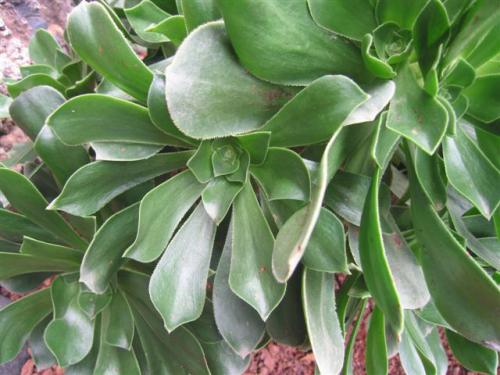BALSAMIFERUM Webb & Berthelot, 1840 (engl./ fr.)
Synonym : Sempervivum balsamiferum (Webb & Berthelot) Webb ex Christ (1888)
Section Aeonium
Distribution : Canary Islands (Nothern and Central Lanzarote, naturalized in Fuerteventura).
Description (by R. Nyffeler in IHSP, 2003) :
Perennial rather few-branched subshrubs to 1.5 m, with resinous scent.
Branches ± erect or ascending, often in groups, 8 - 20 mm in diameter, glabrous, smooth, without reticulations.
Rosette 7 - 18 cm in diameter, center flattened with young leaves tightly appressed to each other.
Leaves 3 - 7 x 1.5 - 3.5 cm, 1.5 - 3 mm thick, narrowly obtrullate to obtrullate-spatulate, apically mucronate, basally cuneate, glabrous or shorthly glandular-pubescent (according to Webb & Berth.), margin with curved cilia (0.5 - 1 mm), greyish green, occasionally with some brownish stripes along the margin.
Inflorescences 15 – 25 x 14 - 20 cm, peduncle 8 - 15 cm, pedicels 2 - 12 mm, glabrous.
Flowers 9-merous (according to Webb & Berth.), sepals glabrous, petals 6 – 8 x 1.2 - 1.5 mm, lanceolate, acuminate, yellow, filaments glabrous.
Cytology : 2n = ca. 72
--------------------------------------------------------------------------------------------------------------------
Synonyme : Sempervivum balsamiferum (Webb & Berthelot) Webb ex Christ (1888)
Section Aeonium
Distribution : Iles Canaries (nord et centre de Lanzarote, naturalisée à Fuerteventura).
Description (par R. Nyffeler dans IHSP, 2003) :
Buisson vivace plutôt peu ramifié, jusqu'à 1,5 m, avec odeur de résine.
Branches ± érigées ou ascendantes, souvent en groupes, 8 - 20 mm de diamètre, glabres, lisses, sans stries.
Rosette 7 - 18 cm de diamètre, centre aplati avec jeunes feuilles étroitement imbriquées entre elles.
Feuilles 3 - 7 x 1,5 - 3,5 cm, 1,5 - 3 mm d'épaisseur, en forme de truelles inversées ou spatulées, mucronées à l'apex, à base cunée, glabres, marge avec cils courbés (0,5 - 1 mm), vert grisâtre, parfois avec quelques bandes marron le long des marges.
Inflorescences 15 – 25 x 14 - 20 cm, pédoncule 8 - 15 cm, pédicelles 2 - 12 mm, glabres.
Fleurs hepta- à octomères, sépales glabres, pétales 6 – 8 x 1,2 - 1,5 mm, lancéolés, acuminés, jaunes, filaments glabres.
Cytologie : 2n = ca. 72
Plants in habitat, Lanzarote :
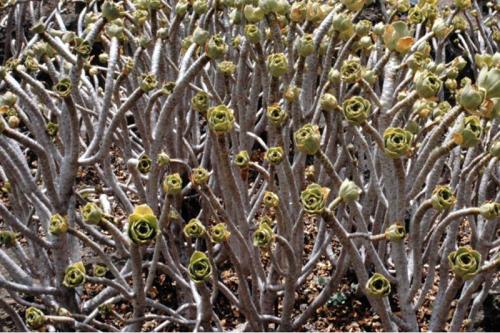
Photo Ray Stephenson
At Bosquecillo :
.jpg)
A. balsamiferum and A. lancerottense growing side by side :
.jpg)
Near the military base of Peñas del Chache :
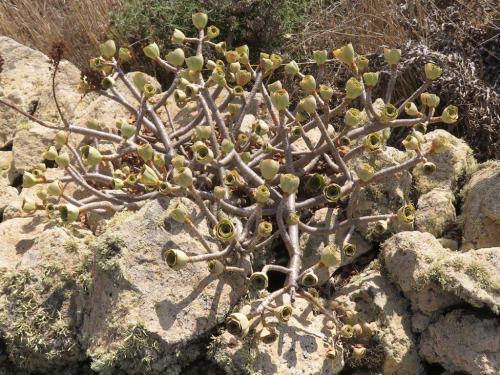
On Caldera Quemada :
.jpg)
.jpg)
Growing on a recent lava flow near Caldera Quemada, but only on rocks covered with lichens :
.jpg)
On Montaña de los Rostros :
.jpg)
Spent inflorescences (in the background Caldera Blanca) :
.jpg)
Plants in habitat, Fuerteventura :
Growing between opuntias near a ruined house in La Matilla :
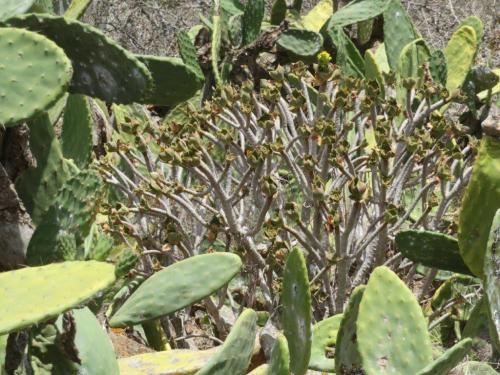
Near a garden in Betancuria :
, aeonium balsamiferum (41).jpg)
, aeonium balsamiferum (35).jpg)
In Betancuria, at the beginning of the path towards Antigua :
, aeonium balsamiferum (54).jpg)
Photos Marco Cristini
Plants in cultivation :
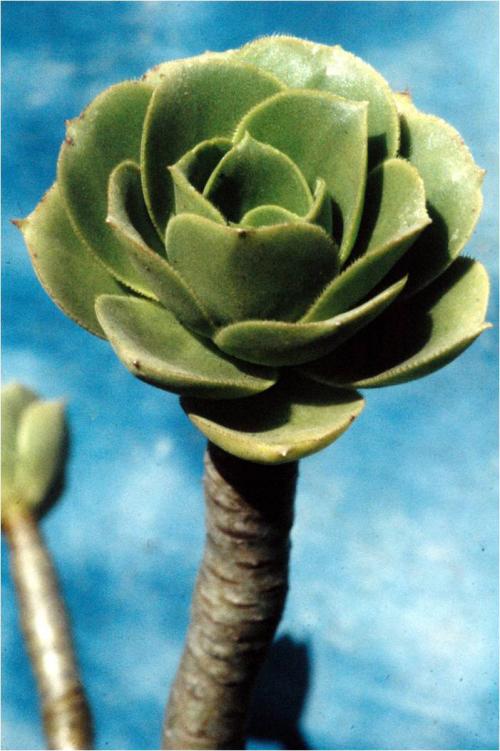
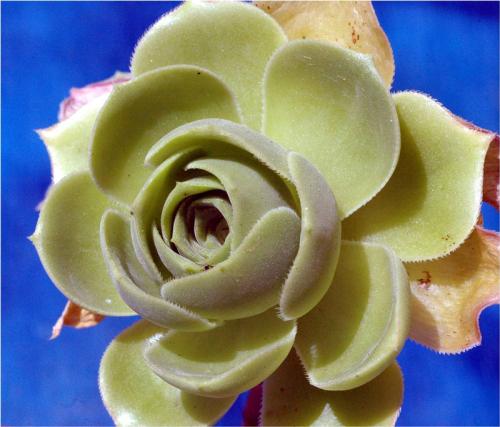
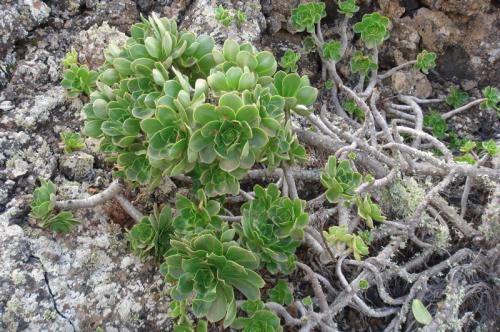
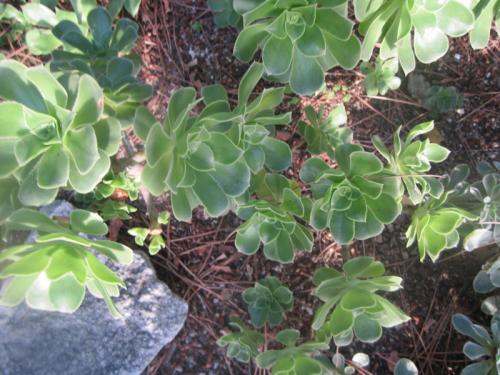
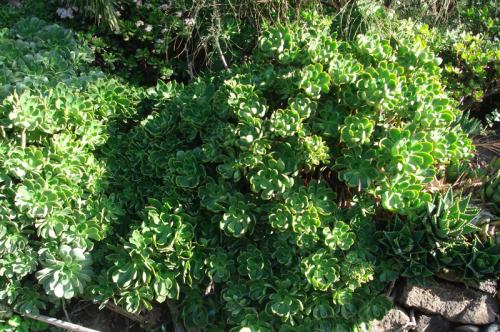
Yaiza, Lanzarote :
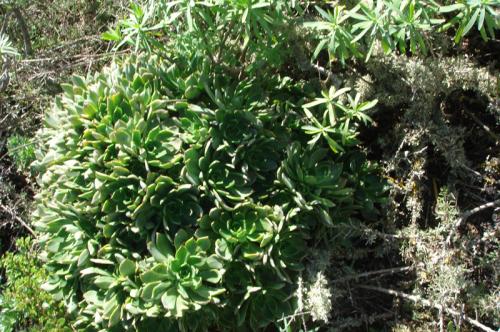
A. balsamiferum from Fuerteventura where the plants have been introduced some centuries ago; they were used to produce fishing lines :
A. balsamiferum, de Fuerteventura, où les plantes ont été introduites il y a plusieurs siècles ; elles étaient utilisées pour la production de fil de pêche : " La substance collante de cette plante était utilisée par les pêcheurs locaux ; farrobar ( = frotter les lignes de pêche) permettait d'imperméabiliser et de rendre plus résistantes leurs lignes, la plante a d'ailleurs pour nom vernaculaire bejeque farrobo ".
